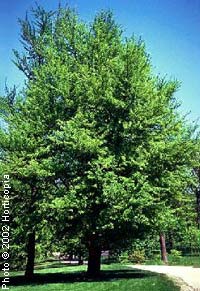
Thursday, December 8, 2011
Negative Feedback Loops
A negative feedback loop is a feedback that reduces the output of a system. In class Dr. Rood recorded his blood sugar level multiple times after eating a snickers bar and drinking a sprite. This graph shows how Dr. Rood's blood sugar level increased drastically in the first ten minutes peaking at 190 mg/dL and then decreased for the next forty minutes until it reached back to its baseline.

Macon Roots
This lab we walked to a community garden and looked around inside at all of the different types of plants and vegetables. These local gardens are supported by a local organization called Macon Roots. They believe that these gardens can create unity and teach people how to be self sufficient in an urban area.
Wednesday, December 7, 2011
Plant Identification Lab
For this lab we walked around campus and Tatnall square park identifying different plants, trees, and shrubs.








Plants:
Mexican Petunia(Ruellia Brittonianiana)- The Mexican petunia is a tender evergreen perennial that forms colonies of stemmy stalks standing 3 ft (0.9 m) in height and of indeterminate width. The strong semi-woody stalks are distinctly vertical in aspect and hold attractive dark green, leaves oppositely at the nodes.

Poison Ivey(Toxicodendron radicans)- better known as poison ivy (older synonyms are Rhus toxicodendron and Rhus radicans), is a poisonous North American plant that is well known for its production of urushiol, a clear liquid compound found within the sap of the plant that causes an itching rash in most people who touch it. The plant is not a true ivy (Hedera).

Aloe(aloe vera)-The species is frequently cited as being used in herbal medicine. Many scientific studies on the use of extracts of Aloe vera have been undertaken, some of them conflicting.

Trees:
Ginkgo Tree(Ginkgo Biloba)-The tree is widely cultivated and introduced, since an early period in human history, and has various uses as a food and traditional medicine.

Sycamore(Platanus Occidentalis)- An American sycamore tree can often be easily distinguished from other trees by its mottled exfoliating bark, which flakes off in great irregular masses, leaving the surface mottled, and greenish-white, gray and brown.

Crape Myrtle(Lagerstroemia)-Most species of Lagerstroemia have sinewy, fluted stems and branches with a mottled appearance that arises from having bark that sheds throughout the year.

Shrubs:
Rhododendron ( Rhododendron maximum)-R. maximum is an evergreen shrub growing to 4 m (13 ft), rarely 10 m (33 ft), tall. The leaves are 9-19 cm (3-8 in) long and 2-4 cm (0.75-1.5 in) broad. The flowers are 2.5-3 cm (1 in) diameter, white, pink or pale purple, often with small greenish-yellow spots.

Angel's Trumpet(Brugmansia)-Brugmansia are long-lived, woody trees or bushes, with pendulous, not erect, flowers, that have no spines on their fruit

Hydrangea(Hydrangea Macriohylla)- In climates where hydrangea flowers, place in a mixed shrub border or at the back of a flower bed. Its rich foliage and large size make it a wonderful background for white or light colored flowers, even tall growing perennials and annuals.

Ocmulgee River lab
For our lab we all went to the Ocmulgee river. For our first activity, my group scanned an area and sifted through the sand looking and counting the freshwater clams we would come across.
The next thing we did was measure the water elevation of the Ocmulgee river.

The last activity we did was to check the speed of the water current. To do this we had one person stand up current and another person about 100ft down current and time how long it would take a sponge ball to float to the opposite end. Our first try it took forty eight seconds and for our second try it took a minute and fifteen seconds.
Sunflower/Tomato attempt
When I received my seed I placed it in a red solo cup filled to the middle with potting soil. Not having success last year in scientific inquiry at my sunflower attempt I tried to give my plant a little more TLC. I poked a few holes in the bottom of my cup for drainage and watered the soil until it was moist. After watering my plant I placed the cup in the corned of my window seal to allow ample sunlight. I would check on my plant daily and water the soil until moist. After about two weeks of watering the top of my soil turned to a light gray and I lost hopes of sprouting. Unfortunately I was unsuccessful again in my attempt to grow a plant. This lab has taught me that if I had to be self sufficient I would not be eating a lot of vegetables.
Subscribe to:
Comments (Atom)


